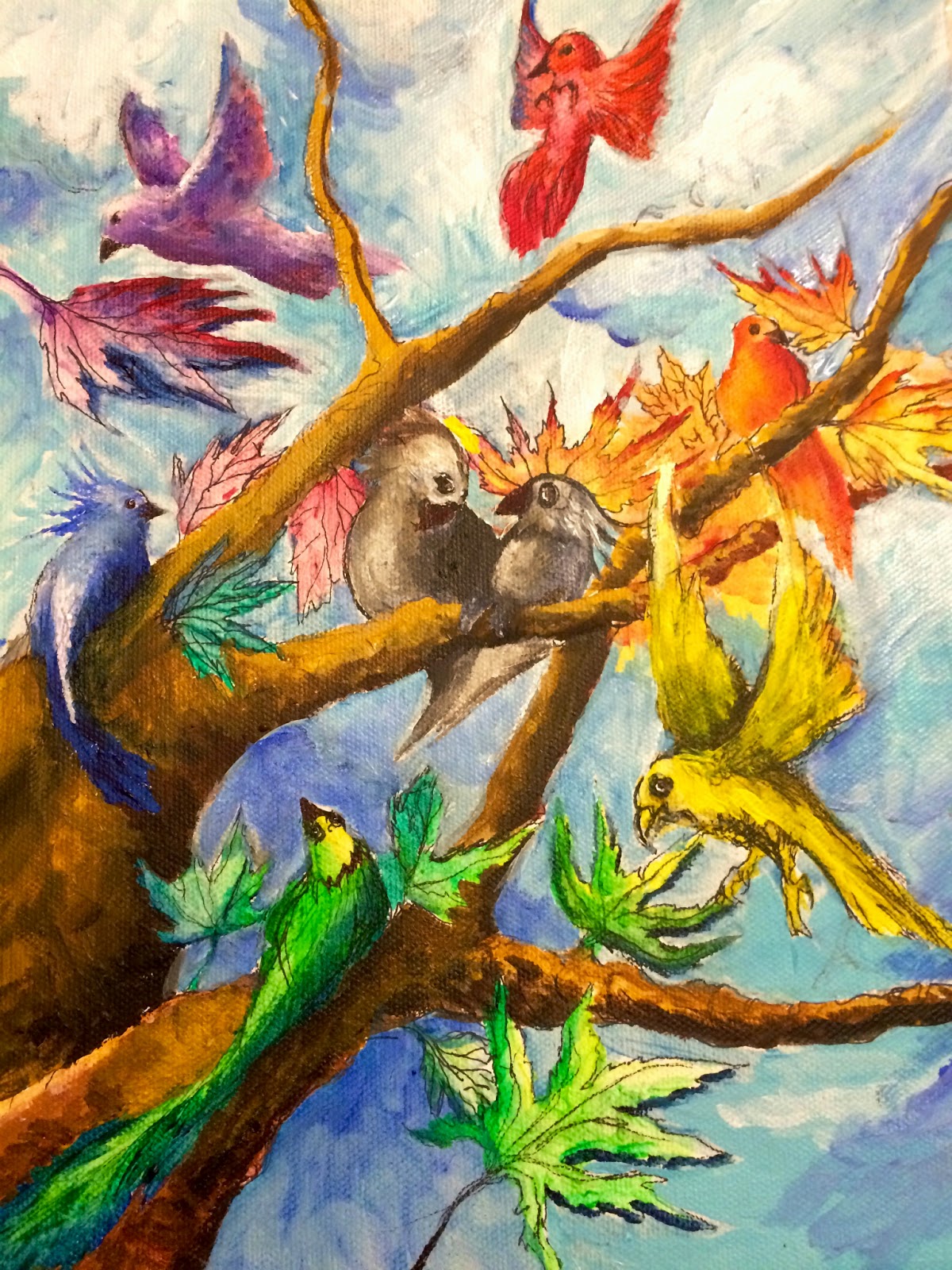In
the 1800's naturalists used their scientific knowledge to draw birds with great
detail. If I taught my students to observe like naturalists would it make them
better artists? The answer turned out to be yes.
Each
one of my students drew a bird and cut it out for our 'Draw a Bird Day' group mural project. I started out by
video taping birds in pet stores, taking a walk outside with binoculars and
photographing my father in law's pet parrots. In addition to looking at my
photographs and videos, my students and I examined bird paintings by the
naturalist artists John Gould (1804-1881) and John J. Audubon (1785–1851) in the hopes of observing the common characteristics of all flying birds.
First
we watched this movie to learn how birds fly:
After making our observations, we turned to the US Fish and Wildlife Service Feather Atlas to find out more about the common characteristics of all flying birds. Using the information we gathered I created this worksheet:
Students were given the option of inventing their own imaginary birds, drawing realistic birds, or creating whimsical cartoon birds, using the guidelines on the worksheet above. They were able to use the iPads in our classroom to look at John J. Audubon's classic book, 'Birds of America' and John Gould's stunning bird illustrations. Most students elected to invent their own birds and color them in a whimsical fashion.
I created this time lapse video on my cell phone to demonstrate how students can use their new found knowledge to create their own birds.
Before we colored our drawings we reviewed basic color mixing using the Bird Color Wheel
I showed my classes my own bird color wheel painting
and encouraged them to experiment with blending colors. Since we would be cutting our pictures out, they were free to experiment with color combinations on the rest of the paper before deciding how to complete their birds. We used pastels and mixed the colors with tissue paper. I created a time lapse video using iMovie on my cell phone to demonstrate how to follow the direction of the bird's feathers and how to layer and blend the pastels.
As the students cut their birds out, I collected them in pocket folders to keep them safe. My sixth graders used fan brushes and acrylic paint to create clouds after I hung blue paper in the hall way. My 8th graders created giant trees to add to the mural and my 7th graders added grass. Early finishers in every class created flowers to create a beautiful environment for our birds to land. We were all set for the spring bird migration.
We hung our murals in the hallway near the cafeteria to insure that the whole school had a chance to enjoy the artwork. Several 6th graders gave up their recess in order to hang the trees and birds using loops of masking tape. My only rule was that everyone's artwork had to be included.
Finally, I typed up an explanation of our project and hung it in the corridor where it became a handy spot for our birds to rest from their long migration.
I retaught this lesson again to 6th, 7th and 8th graders at Samuel E. Shull School in April of 2016. This time the students used acrylic paint and canvas board to create their birds.
Who was John Gould and how did he inspire my students?
John Gould (1804 – 1881) was an English ornithologist and bird artist. He published many illustrated books on birds and is considered the father of bird study in Australia. His identification of the birds, now nicknamed "Darwin's finches", played a role in the inception of Darwin's theory of evolution by natural selection. Gould's work is referenced in Charles Darwin's book, On the Origin of Species. Source:
All of Gould's books and drawings are in the public domain and available for free on the Internet.
Here are a few of his illustrations, drawn in the age before color photography,when naturalists could rely only on their pencils and the power of observation:
For more information and resources on drawing and painting birds, please visit my earlier article on this subject:
On Painting Birds, by clicking here.
On Painting Birds, by clicking here.
































Your students' works are stunning. I love how you had scaffolded their learning.
ReplyDeleteWell done! I love your blog! Keep up working! And have lots of inspiration! http://britishessays.co.uk
ReplyDeleteThis is wonderful, very inspiring to see such passion for Art
ReplyDelete